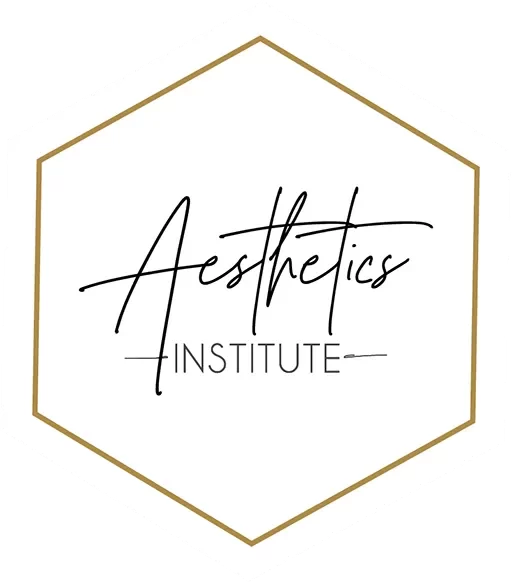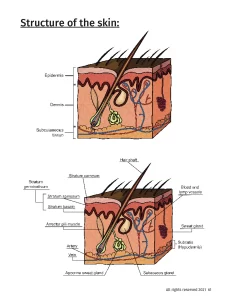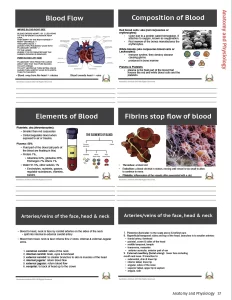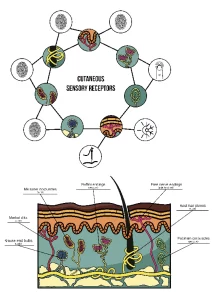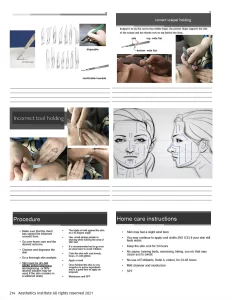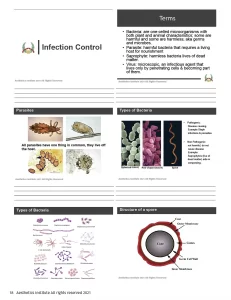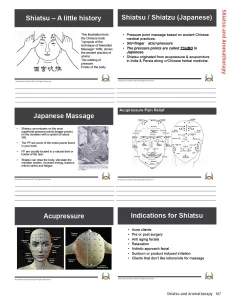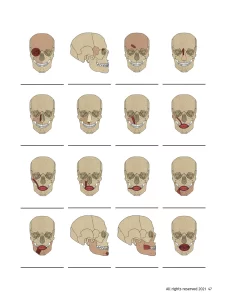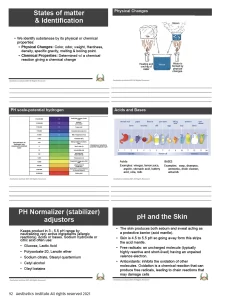AESTHETICS INSTITUTE
Skincare Theory Curriculum Masters Esthetics
The first seven weeks of the Masters Esthetics course are entirely online, utilizing an instructor-supported curriculum that is 100% on-demand.

Students can complete their weekly assignments, readings, and quizzes from anywhere they can access the internet, on the days and times that best fit their schedule.
Skincare Theory Curriculum Online Modules
- Personal & Professional Development and Spa Protocols
- Infection Control and Esthetician Scope of Practice
- Anatomy & Physiology and Structures of the Skin and Appendages
- Histology & Dermatology and Disorders of the Skin
- Chemistry & Cosmetic Chemistry and Skincare Product Analysis
- Electricity and Machine Modalities
- Client Care, Consultations, and Charting
- Practical Skills and Skin Analysis Principles
- Microcurrent Treatment and Photolight Therapy
- Massage Techniques and Aromatherapy and Ergonomics
- Exfoliation and Chemical Peels
- Makeup Application and Tinting
- Classic Lash Extensions and Lash Lifting
- Body Treatments and Back Facials
- Oregon Rules & Regulations and State Testing Expectations
- European Facial Techniques, Extractions, and Equipment
- Hair Removal with Soft & Hard Wax
- Microdermabrasion with DiamondGlow
- Dermaplaning Techniques
- Social Media & Marketing, and Spa & Salon Business Planning
Please note that this list serves as an overview of the program’s curriculum and is subject to change at any time and without notice. Please schedule a campus visit with one of our admissions representatives today to learn about the most up-to-date curriculum information included in this program.
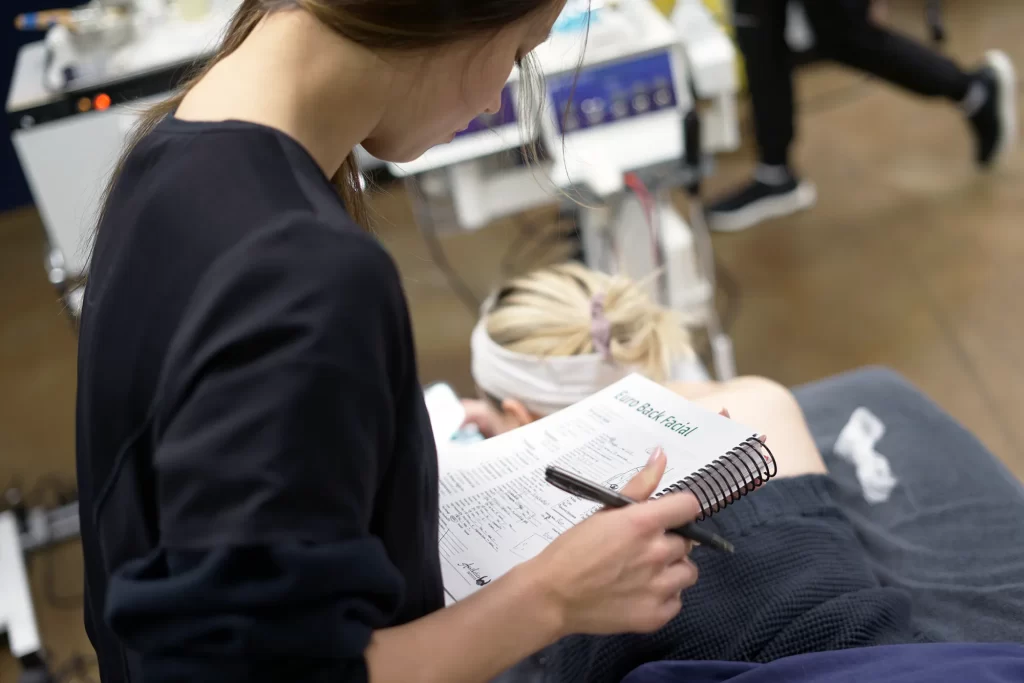
The online portion of the program works in tandem with our Masters Esthetics Workbook, Protocols, and Reference Material, along with the internationally recognized Milady Standards Esthetics digital textbooks.
The second half of the course consists of in-house, competency-based training. You can read more about the services, skills, and modalities you will learn about during that hands-on portion of the program here.
This page provides a broad overview of each online skincare theory curriculum module students will complete during their first seven weeks in the program.
We want to help prospective students understand the comprehensive nature of our educational program more clearly.
While not overly technical or difficult to learn, our academic program is exceptionally thorough and offers a comprehensive baseline of knowledge for a successful esthetician to master.
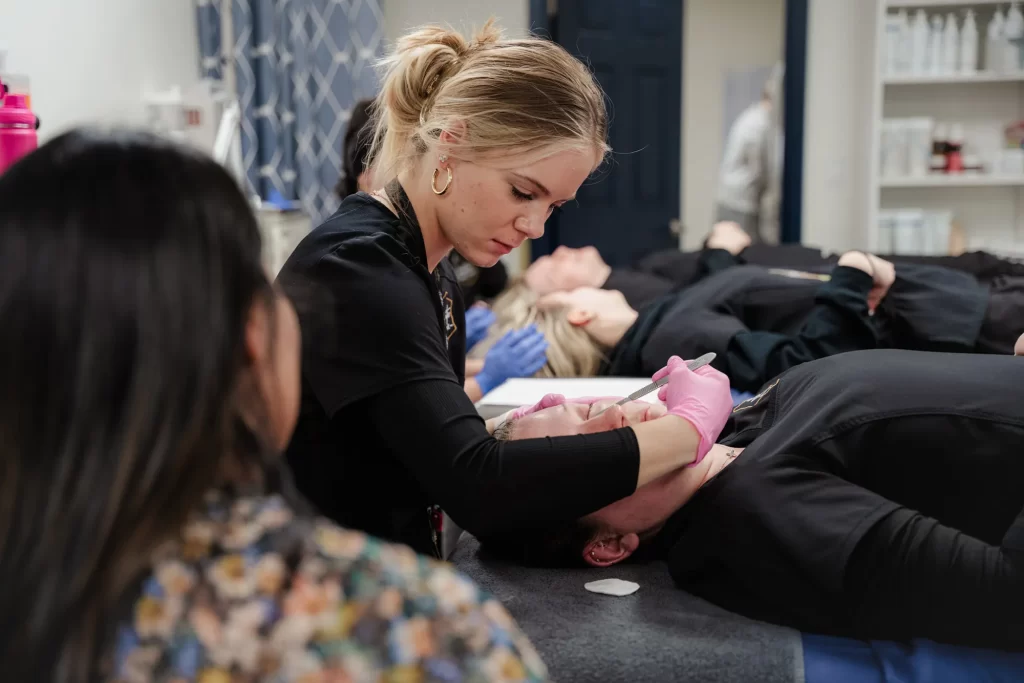
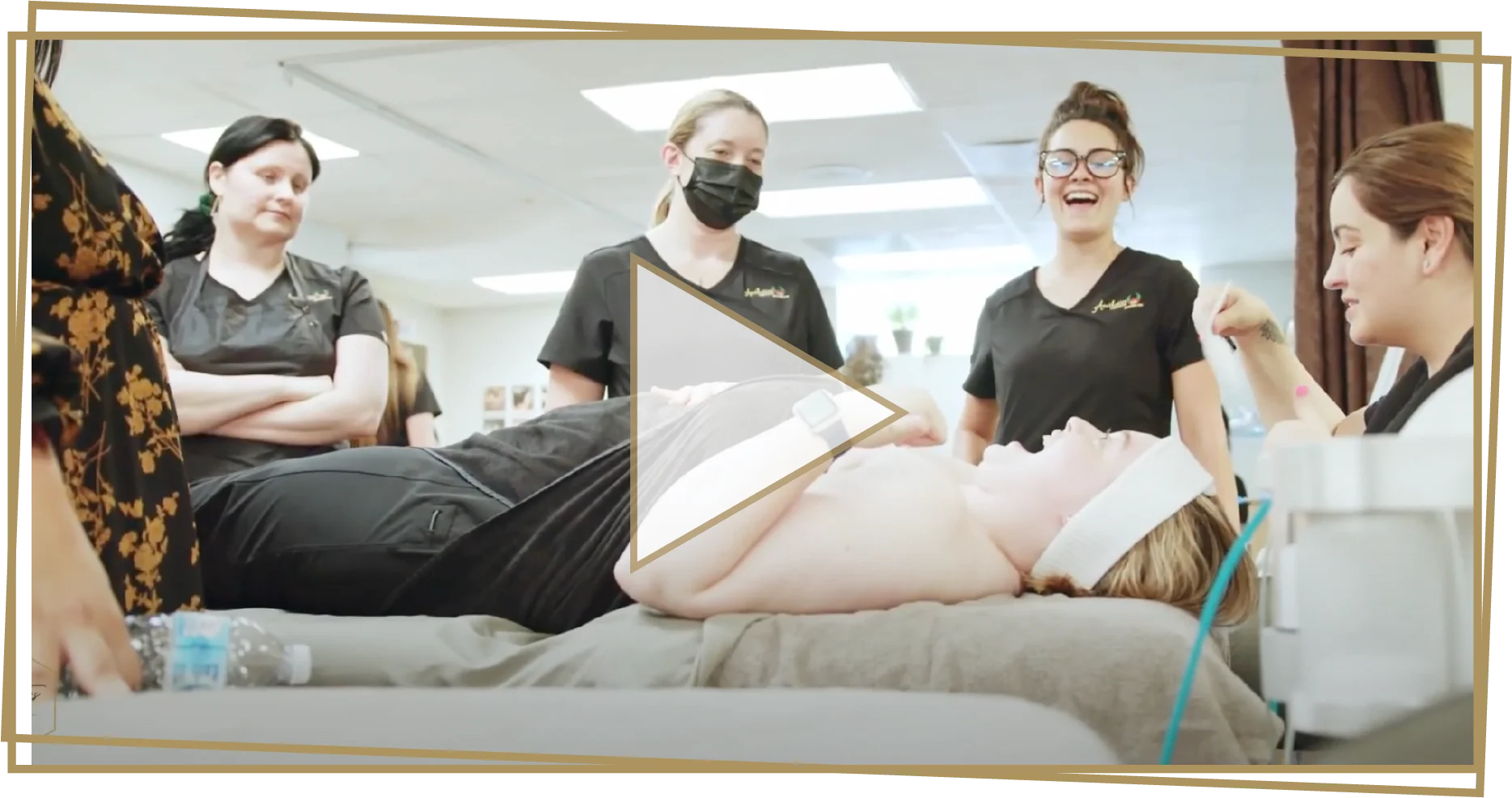
We base the curriculum at the Aesthetics Institute on the techniques for providing services, unlike other schools that often center their curriculum around a specific product line.
Our graduates are prepared to work in any environment and are not limited by only a single product line or brand.
Our curriculum has developed from the 40 years the school has taught esthetics in the pacific northwest.
While both modern and focused on the latest esthetics trends and the newest science and technology in the beauty industry, it also takes a deep dive into the fundamentals of skincare, product science, anatomy, and physiology.

Skincare Theory Curriculum Online Modules
- Personal & Professional Development and Spa Protocols
- Infection Control and Esthetician Scope of Practice
- Anatomy & Physiology and Structures of the Skin and Appendages
- Histology & Dermatology and Disorders of the Skin
- Chemistry & Cosmetic Chemistry and Skincare Product Analysis
- Electricity and Machine Modalities
- Client Care, Consultations, and Charting
- Practical Skills and Skin Analysis Principles
- Microcurrent Treatment and Photolight Therapy
- Massage Techniques and Aromatherapy and Ergonomics
- Exfoliation and Chemical Peels
- Makeup Application and Tinting
- Classic Lash Extensions and Lash Lifting
- Body Treatments and Back Facials
- Oregon Rules & Regulations and State Testing Expectations
- European Facial Techniques, Extractions, and Equipment
- Hair Removal with Soft & Hard Wax
- Microdermabrasion with DiamondGlow
- Dermaplaning Techniques
- Social Media & Marketing, and Spa & Salon Business Planning
Personal & Professional Development and Spa Protocols
This module will cover how to develop your personal image in the industry and how you present yourself professionally.
It will cover the types of workplaces you might consider working at after graduation, what potential employers are looking for when hiring, and how to best present yourself as an employee or potential employee.


This is where we begin to talk about customer service, which is essential to your career, by learning to properly communicate with your clients, co-workers, employers, and employees.
You will learn the basics of marketing and networking, which are underrated but absolutely necessary parts of the industry.
In this module, you will learn how to format your resume, salon interview do’s and don’ts, and the types of questions that are asked during most interviews.
This module also goes into the reality of working for yourself and what that looks like vs. working for someone else.
Student Success Tip:
" Take the time to really explore the different career opportunities there are in this industry. Ask questions, and seriously consider each opportunity so you can make an educated decision on the path you might want to take.
I thought learning about strategies for building clientele, such as seasonal and referral promotion sales ideas, was really helpful and interesting and could help me grow my future business."
Student Success Tip:
" Take the time to really explore the different career opportunities there are in this industry. Ask questions, and seriously consider each opportunity so you can make an educated decision on the path you might want to take.
I thought learning about strategies for building clientele, such as seasonal and referral promotion sales ideas, was really helpful and interesting and could help me grow my future business."
Infection Control and Esthetician Scope of Practice
This module will cover all aspects of infection control and how to keep yourself and your clients safe.
You will learn about common types of parasites, bacteria, viruses, and blood-borne pathogens, as well as how they are spread and how to minimize their spread.
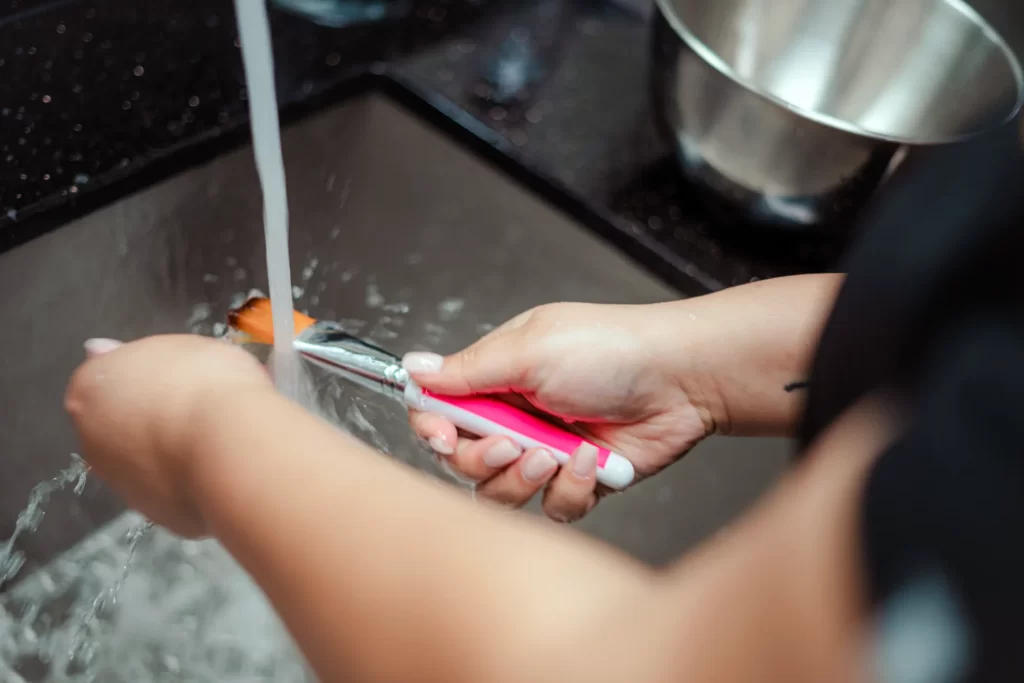
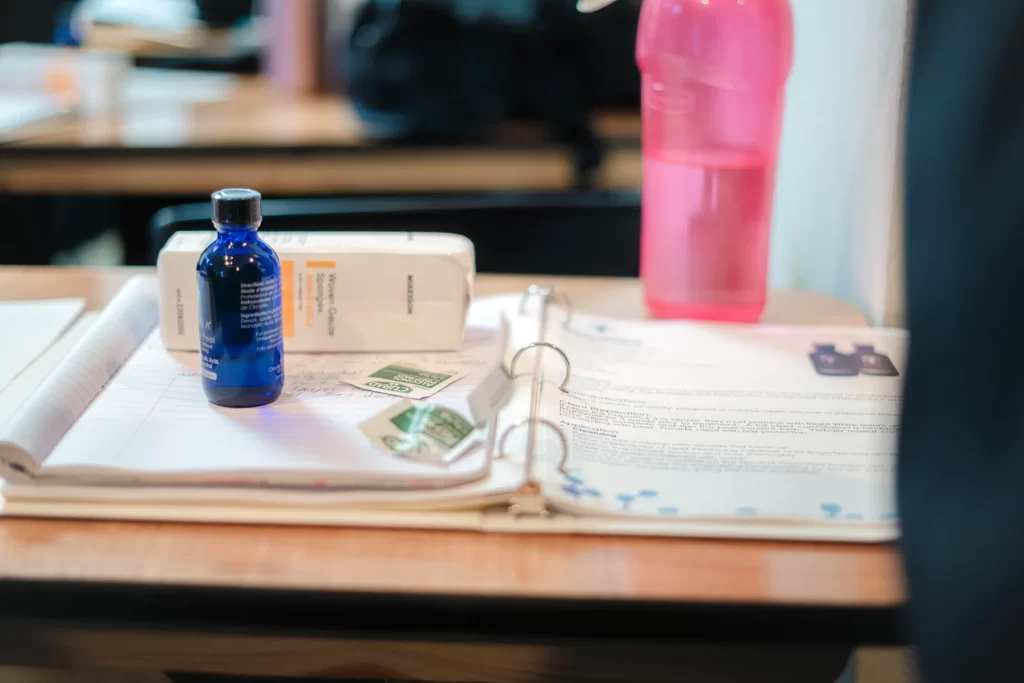
You will learn about the different products and machines used in performing and maintaining disinfection, sanitation, and sterilization, as well as how to mix the ones we use at the school. You will learn the importance of universal precautions and potential hazards.
This module will also cover Oregon Rules and Regulations as set forth by the Health Licensing Office of the Board of Cosmetology. These guidelines set by the state regulate what estheticians can and can’t do.
You will learn where to find them, how to read them, and what you need to know to operate safely within your scope of practice as a licensed esthetician.
Anatomy & Physiology and Structures of the Skin and Appendages
This module will cover the body’s bones, muscles, arteries and veins, and nerves. You will learn how each of these systems works in relation to each other.
Even though we deal directly with skin, it’s crucial to understand how the body as a whole operates and interacts and how everything internal can affect the skin.
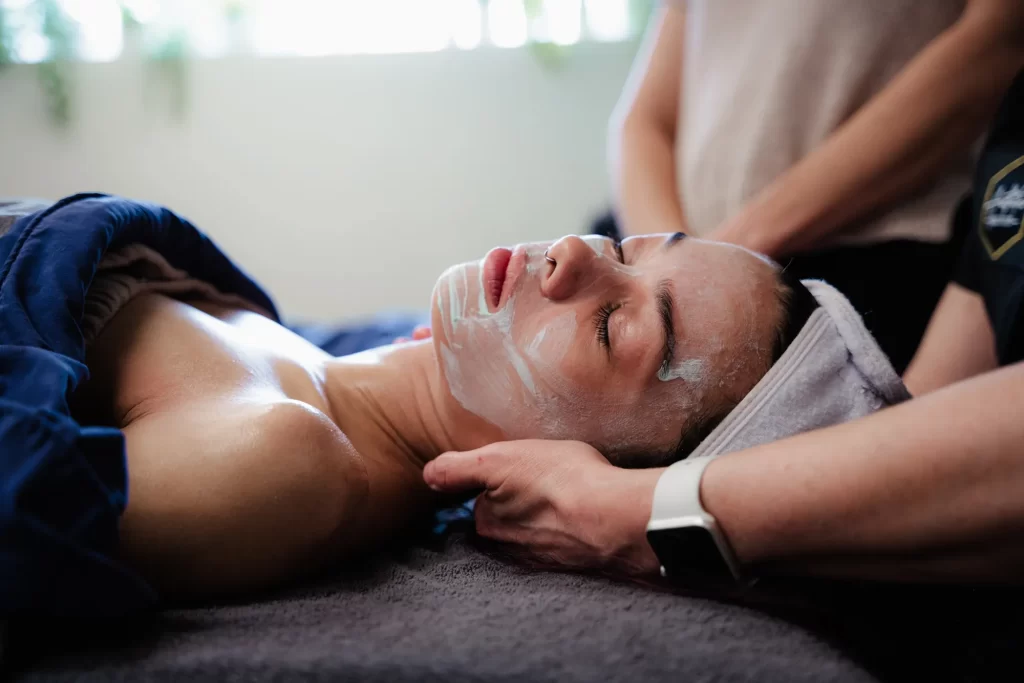
You will start learning anatomy and physiology at the smallest level of the cells and work up to learning about each system in the body.
The skin is a complex organ with many parts that are directly related to other structures in the body that we may not always consider.
Instructor Explanation:
" Having a fundamental knowledge of these structures can help estheticians understand more about their client’s skin and why they may see specific issues and concerns being presented."
Instructor Explanation:
" Having a fundamental knowledge of these structures can help estheticians understand more about their client’s skin and why they may see specific issues and concerns being presented."
Student Success Tip:
" Learning the material in this portion of the program will aid in your legitimacy and knowledge of why you do what you do.
For example, one of my favorite things in this chapter was learning about Lymphatic Drainage Theory. This theory is popular right now because lymphatic drainage treatments are sometimes called a “natural facelift” because it eliminates toxins and fluids.
Because of this, it is important to know the lymphatic system and exactly where to place your hands or tool, and in which direction to move them to assist in proper lymphatic drainage.”
Student Success Tip:
" L earning the material in this portion of the program will aid in your legitimacy and knowledge of why you do what you do.
For example, one of my favorite things in this chapter was learning about Lymphatic Drainage Theory. This theory is popular right now because lymphatic drainage treatments are sometimes called a “natural facelift” because it eliminates toxins and fluids.
Because of this, it is important to know the lymphatic system and exactly where to place your hands or tool, and in which direction to move them to assist in proper lymphatic drainage.”
Histology & Dermatology and Disorders of the Skin
This module will cover the study of the skin on a deeper level, including the structures and functions of each layer of the skin.
Each layer of the skin is home to systems and structures that serve different purposes. You will begin to understand why the skin behaves the way it does because of these structures.

Instructor Explanation:
" Tt is important to know the differences between an esthetician and a dermatologist, along with what we can and cannot treat and that an esthetics license permits treating the epidermis only. Dermatologists can diagnose diseases or treat skin conditions with medication. It is important to know when a dermatologist is needed based on your knowledge of what different skin conditions look like, so pay close attention!”
Instructor Explanation:
" Tt is important to know the differences between an esthetician and a dermatologist, along with what we can and cannot treat and that an esthetics license permits treating the epidermis only.
Dermatologists can diagnose diseases or treat skin conditions with medication. It is important to know when a dermatologist is needed based on your knowledge of what different skin conditions look like, so pay close attention!”
This module also covers Fitzpatrick Scale skin typing, the importance of SPF, and the types of skin cancer you may see in your career.
You will learn how to use sunscreen, how often to re-apply, and the dangers of different types of UV rays. You will also learn the basics of skin analysis and common skin concerns, such as fine lines and wrinkles, rosacea, sun damage, and acne.
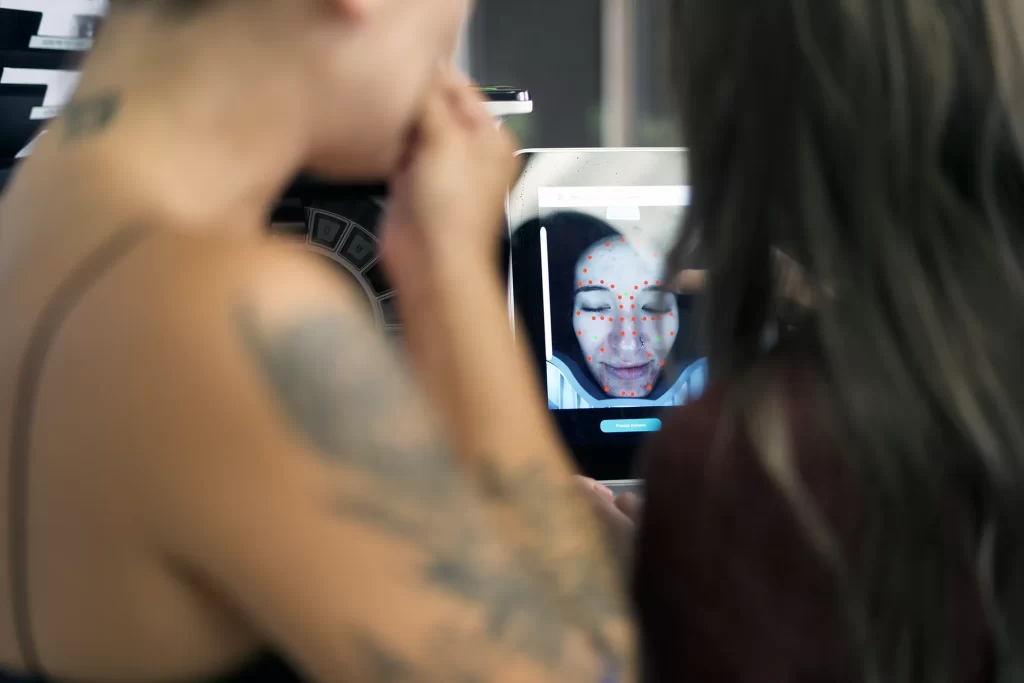
This scale is a critical assessment tool that helps address different skin type concerns and potential problems. Everyone’s skin is unique, so knowing how to assess and treat each person’s skin is essential.
Knowing this scale helps assess someone’s risk for skin cancer based on the amount of pigment in their skin and how their skin reacts to the sun. This enables you to advise them on how to take appropriate precautions with sun exposure.
Student Success Tip:
" Wrinkles and pigmentation are two of the main concerns people want to target in their skincare routine or when getting a skin care service. We learn that 90% of wrinkles are caused by sun exposure, thus realizing the importance of wearing SPF. Sun exposure also plays a part in unwanted pigmentation on the skin.”
Student Success Tip:
" Wrinkles and pigmentation are two of the main concerns people want to target in their skincare routine or when getting a skin care service.
We learn that 90% of wrinkles are caused by sun exposure, thus realizing the importance of wearing SPF. Sun exposure also plays a part in unwanted pigmentation on the skin.”
Chemistry & Cosmetic Chemistry and Skincare Product Analysis
This module will cover chemistry in skin care and what is involved in formulating, regulating, and testing cosmetic products.
You will learn about where ingredients come from, how pH affects the skin and products, and the difference between natural and synthetic ingredients.
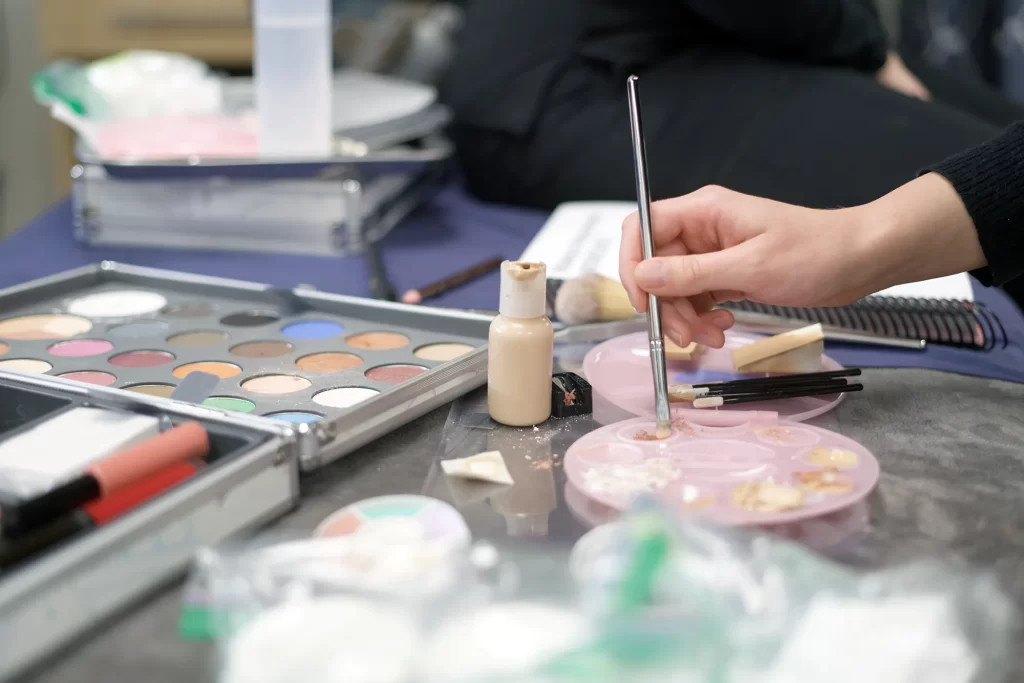
You will learn about what makes a good skincare routine and the importance of delivery systems in skincare products. This module will also cover different types of ingredients used in skincare, what they are made of, and why they are essential.
Many ingredients that seem useless actually serve a function in the product, and it’s important to understand this principle and also be able to explain it to your clients.
Instructor Explanation:
" In this module, you will learn the basics of chemistry and how that relates to skincare, which you will find out, is a lot. You will learn about different chemicals and products and how they react with the skin.
Everyone’s skin is different, so it is important to know the chemistry behind skincare products and their ingredients to customize facials or recommend products to your clients.
After graduation, some students even go on to make their own products with this in-depth understanding of cosmetic chemistry!"
Instructor Explanation:
" In this module, you will learn the basics of chemistry and how that relates to skincare, which you will find out, is a lot. You will learn about different chemicals and products and how they react with the skin.
Everyone’s skin is different, so it is important to know the chemistry behind skincare products and their ingredients to customize facials or recommend products to your clients.
After graduation, some students even go on to make their own products with this in-depth understanding of cosmetic chemistry!"
Electricity and Machine Modalities
This module will cover the different electrical currents we use in esthetics and the different modalities and applications for each type of electric current.
You will learn the difference between alternating current and direct current and how they affect the skin uniquely.

We will also cover the different electrical pieces of equipment you will learn and the indications and contraindications for each. Knowing when and how to choose different electrical components is vital to customizing services for different skin types and skin conditions.
You will also begin to learn about the different applications of high frequency and galvanic current and their benefits in esthetics services and treatments.
Student Success Tip:
" A large part of being an esthetician involves the use of electricity and equipment. Before going to school, I honestly did not know that there were types of facials that used electricity and electrical equipment.
One machine that we learn and use a lot is the European Facial machine. This machine contains a high-frequency electrical unit and a positive and negative Galvanic current electricity element.
These forms of electricity do a number of things for the skin, including benefiting those with bacterial acne and opening up pores to aid in product penetration using negative galvanic electricity."
Student Success Tip:
" A large part of being an esthetician involves the use of electricity and equipment. Before going to school, I honestly did not know that there were types of facials that used electricity and electrical equipment.
One machine that we learn and use a lot is the European Facial machine. This machine contains a high-frequency electrical unit and a positive and negative Galvanic current electricity element.
These forms of electricity do a number of things for the skin, including benefiting those with bacterial acne and opening up pores to aid in product penetration using negative galvanic electricity."
Client Care, Consultations, and Charting
This module will cover everything you should know about client care. You will learn about client forms, client records, and what documentation is required from the state of Oregon.
You will also learn about greeting clients, rebooking them, and how to resolve issues with unhappy clients.
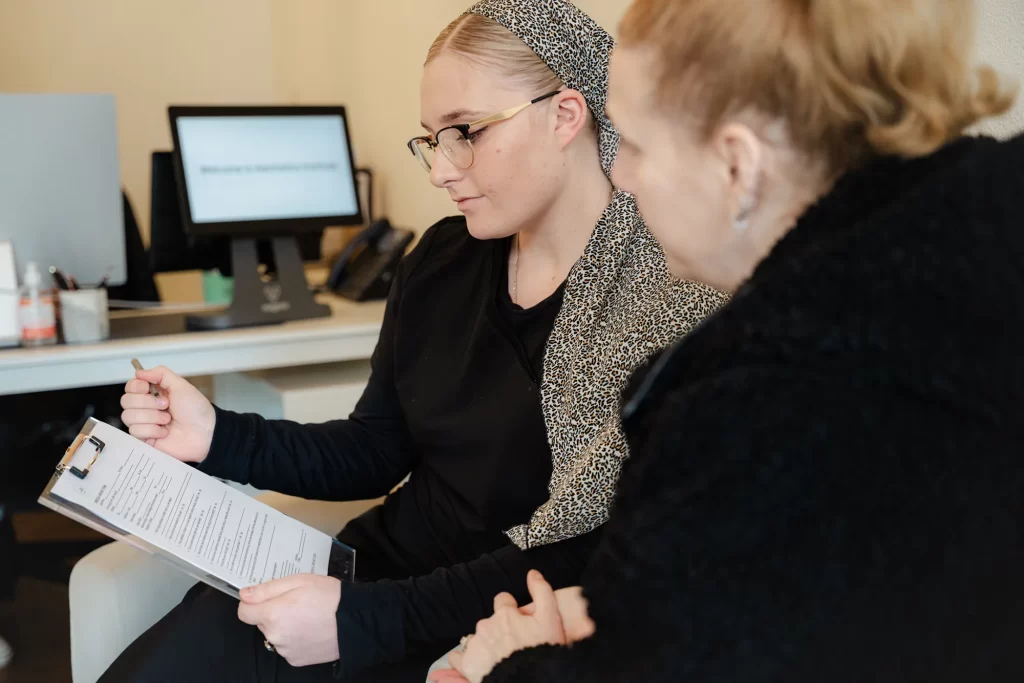
We will cover the basics of retail product sales and why implementing these sales is important for both your business and your client’s overall skincare results.
This module will also cover the basic steps of a facial, from how to set up your treatment room to perform the service to properly cleaning up at the end.
Instructor Explanation:
" This section, at times, may sound obvious to some, but it is really important. This is an extremely customer service-focused industry, and it is imperative to develop those skills. This module is full of things to be aware of that will ultimately keep your client returning and grow your clientele. Learning about client care and charting, you dive into different phases of client service that can help guarantee customer satisfaction down to the detail of things, such as how the tone of your voice affects client first impressions.”
Instructor Explanation:
" This section, at times, may sound obvious to some, but it is really important. This is an extremely customer service-focused industry, and it is imperative to develop those skills.
This module is full of things to be aware of that will ultimately keep your client returning and grow your clientele.
Learning about client care and charting, you dive into different phases of client service that can help guarantee customer satisfaction down to the detail of things, such as how the tone of your voice affects client first impressions.”
Practical Skills and Skin Analysis Principles
This module will cover the first facial you will learn at the school. It will cover the different types of products used in a facial, from cleansers to exfoliants to serums.
You will learn why different products are chosen for different skin types and skin conditions and the basics of clinical decision-making.

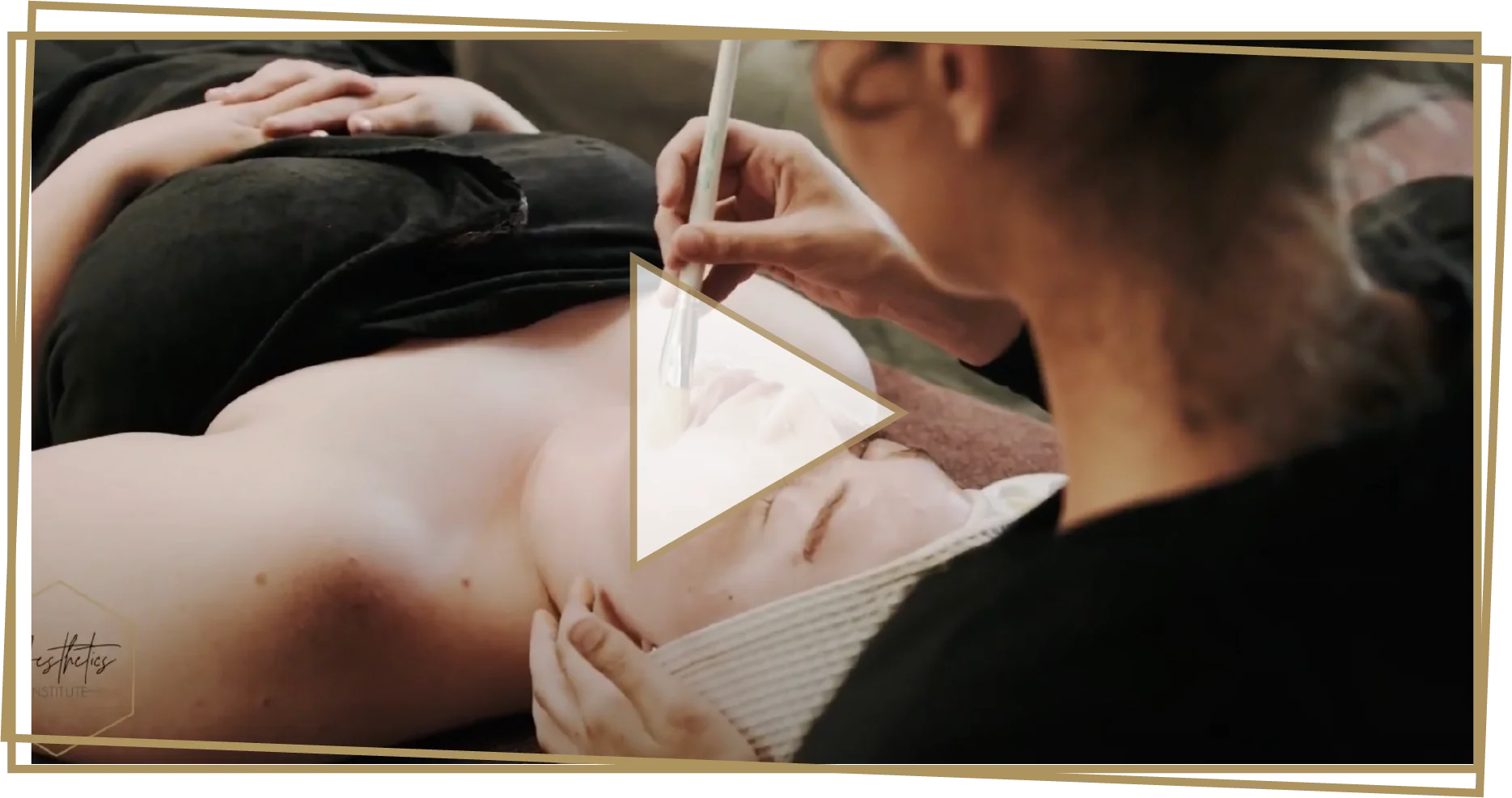
You will learn how to set up your tray for your facial and how to set up your treatment room for the most effective treatment and most comfortable experience for your client. You will learn the way we perform cleansing and exfoliation at the Institute.
You will learn makeup and product removal as well as the proper toweling and mitting techniques we teach. You will also learn the Swedish massage technique and product application.
The Refresh facial is the first facial you will be tested on, so you will get an idea of what to expect on your practical exam.
Instructor Explanation:
" Ergonomics is the study of people's efficiency in their working environment. It is why we care about what chairs, tools, and machines we use and the proper posture to avoid injury later in our careers. Many estheticians’ careers have ended far too early due to injury from not paying attention to the importance of ergonomics.”
Instructor Explanation:
" Ergonomics is the study of people's efficiency in their working environment. It is why we care about what chairs, tools, and machines we use and the proper posture to avoid injury later in our careers.
Many estheticians’ careers have ended far too early due to injury from not paying attention to the importance of ergonomics.”
Microcurrent Treatment and Photolight Therapy
This module will cover microcurrent treatment and photo-light therapy (also known as LED treatment). For microcurrent, you will learn about its different medical and esthetic applications and how it works on a cellular level.
This is a very popular treatment and has been used for decades with great results. You will learn about the machine you get and how each phase works on the face’s skin and muscles.
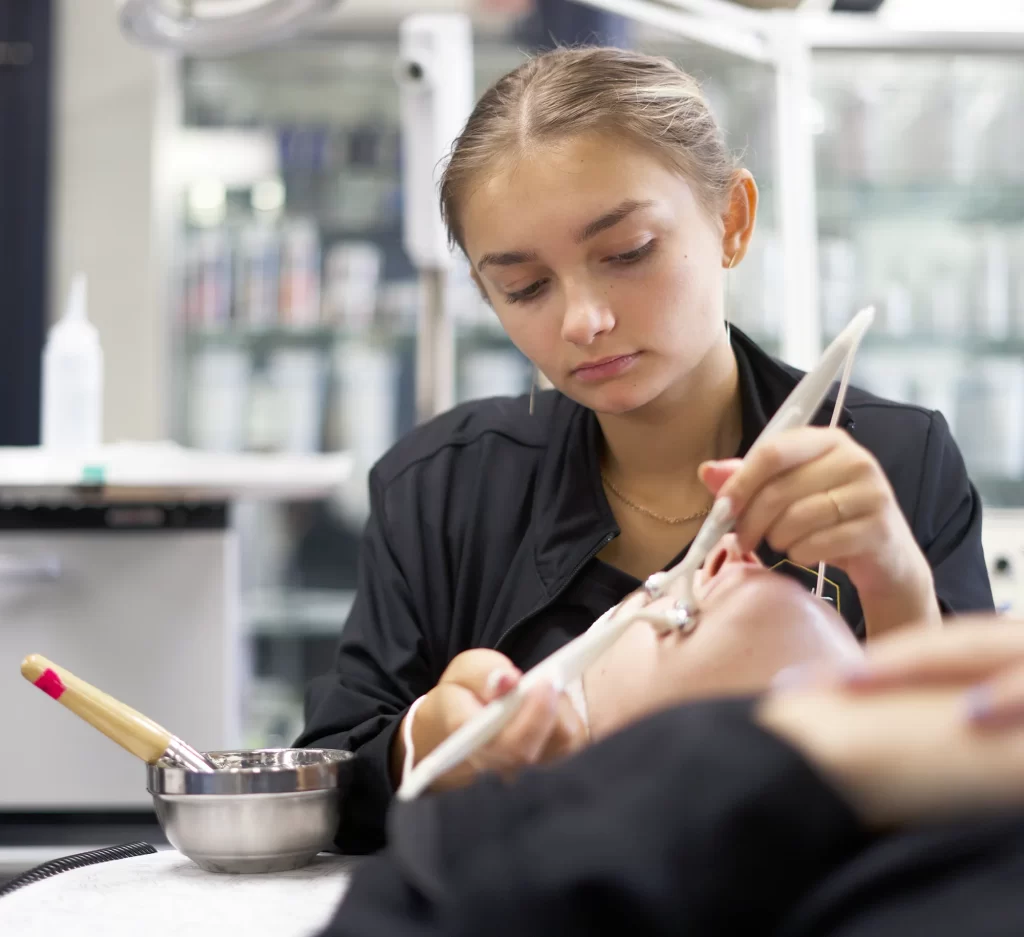
This module will also cover photo light therapy, the types of light used, and how each color of light interacts with the skin.
Each color of visible light used in photo light therapy (LED) reaches a different layer of the skin and can be used to target different common skin issues. You will dive deep into the different colors and what they each treat.
Massage Techniques and Aromatherapy and Ergonomics
This module will cover the history of aromatherapy and some of the most common ones used in spa settings.
You will learn about the different techniques used to make and blend aroma therapy oils and how each technique differs. You will also learn about each of the common oils and why different ones would be chosen for each client.
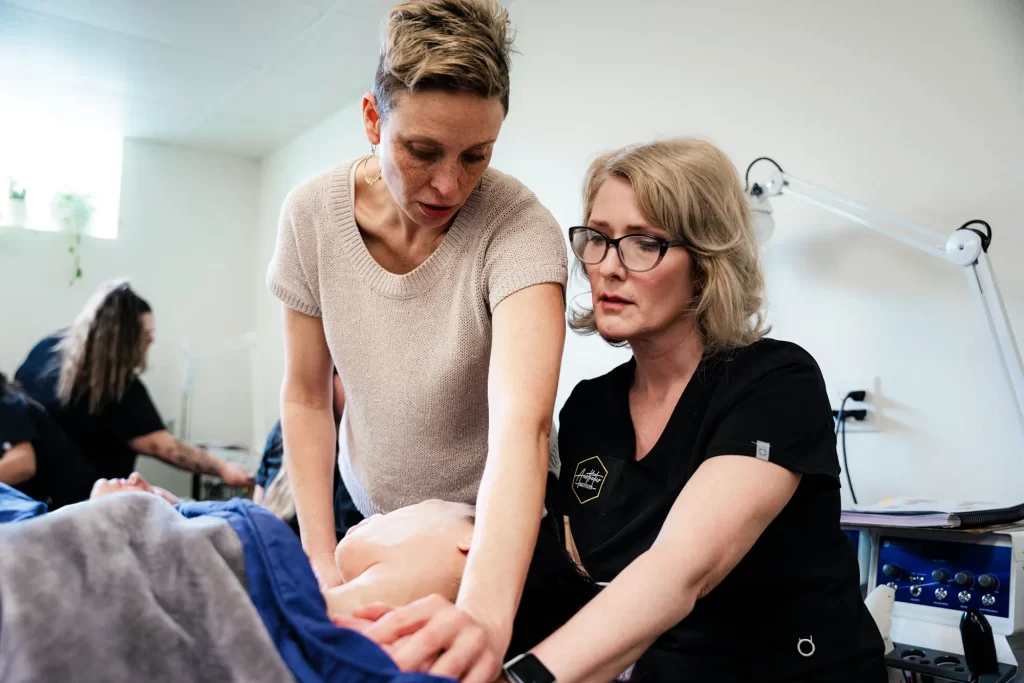
This module will also cover the second massage technique you learn, Shiatsu, and its history.
This is a very popular pressure point massage that can be used in place of the Swedish massage, and you will learn when and why you would choose one over the other.
Exfoliation and Chemical Peels
This module will cover the enzymes and acids we use and the indications and contraindications of each. You will learn why each individual product is important and who it is best for.
You will learn how enzymes are made, how they work, and who they work best on. You will also learn about alpha hydroxy acids and beta hydroxy acids and the difference between them. Each acid we use has a different benefit.

You will learn what each acid is made from, what layer of the skin it works on, and why it works on the skin.
You will complete several worksheets that help you understand why each product is better for common skin types and skin conditions.
Makeup Application and Tinting
This module will cover the practical application of makeup, lash tinting, brow tinting, and maintaining sanitation throughout the treatments.
It will cover various types of makeup products, their different forms, what order to apply them in, and how to apply and blend them.

You will learn to color match, pair eyeshadows, and apply eye shadows properly. You will learn the ins and outs of MUD makeup, the brand of makeup kit you will receive, and tips and techniques for makeup looks.
You will also learn what is expected of you during your final practical exam.
Instructor Explanation:
" Learning makeup application is required by the state of Oregon to be an esthetician, however, it is not a large part of our program. If makeup is something you are passionate about, you will have the opportunity to spend more time on it in school than in other schools that do not utilize a competency-based education model.”
Instructor Explanation:
" L earning makeup application is required by the state of Oregon to be an esthetician, however, it is not a large part of our program.
If makeup is something you are passionate about, you will have the opportunity to spend more time on it in school than in other schools that do not utilize a competency-based education model.”
Classic Lash Extensions and Lash Lifting
This module will cover lash lifting and lash extensions. You will learn about the difference between the two treatments and how to select clients for each.
For lash lifting, you will learn the basics of what lash lifting is, who it’s good for, and how to educate your clients about its benefits.
You will learn the importance of good techniques and how to troubleshoot if something doesn’t turn out how you were hoping.

For lash extensions, you will learn about the different types, lengths, and weights of lash extensions and how they differ.
You will learn about the consultation process, book new treatments and fills, and how to educate your clients about post-care.
We will teach you classic lash extension application techniques, starting with practicing on a cotton round and then on lash strips on a mannequin head.
Finally, you will learn how to map lashes and create different looks with different lash sizes. You will learn about all the products and tools included in your lash extensions kit from SugarLash Pro.
Student Success Tip:
" It can sometimes feel awkward to be learning about all of these hands-on skills online before you ever get to the hands-on practice. But the more you study the techniques and procedures for applying lashes, the faster you will pick it up when you start actually practicing it at the school. Stick with it!”
Student Success Tip:
" It can sometimes feel awkward to be learning about all of these hands-on skills online before you ever get to the hands-on practice.
But the more you study the techniques and procedures for applying lashes, the faster you will pick it up when you start actually practicing it at the school. Stick with it!”
Body Treatments and Back Facials
This module will cover different types of body treatments commonly offered in the industry and what types of products and techniques are used during them.
You will learn the indications, contraindications, and education behind the art of body treatments.


Many types of body treatments can be customized to clients’ wants and skincare goals. You will learn about the different natural ingredients commonly used in body treatments and why they are used.
This module will also cover treatment room setup, modesty draping, and the walkthrough of the body treatment you will be learning during your in-house training.
Oregon Rules & Regulations and State Testing Expectations
This module will cover a more in-depth look at the Oregon rules and regulations that you need to know to be a professional licensed esthetician.
Oregon Rules and Regulations are set forth by the Health Licensing Office of the Board of Cosmetology and regulate what we, as Estheticians, can and can’t do.
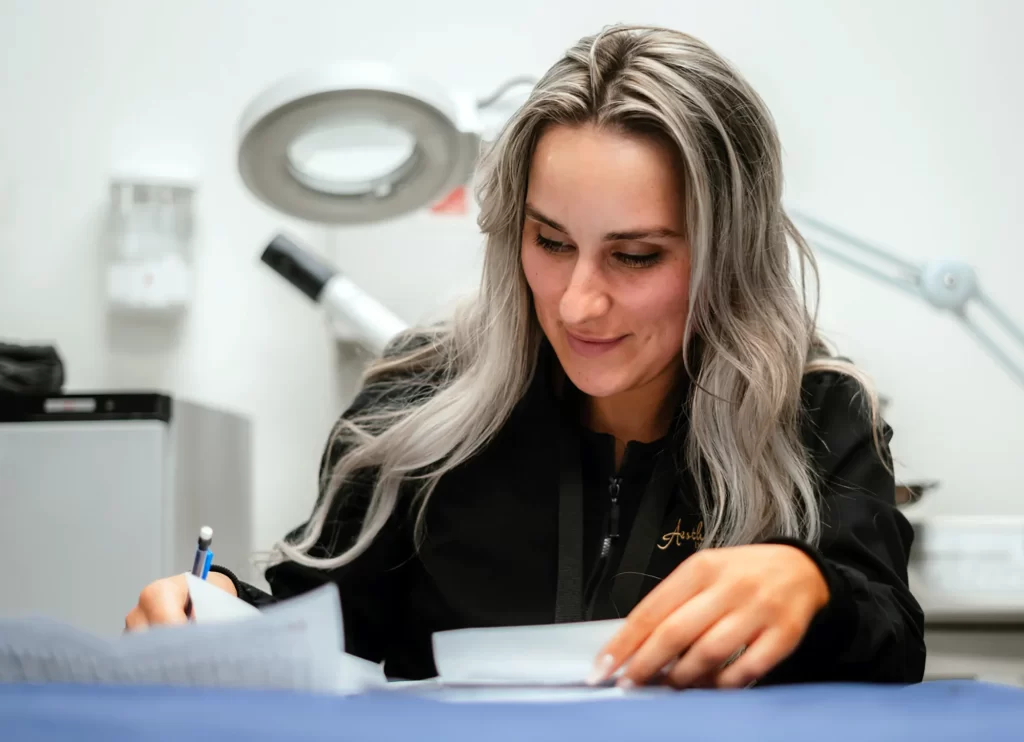
You will learn where to find them, how to read them, and what you need to know to operate safely within your scope of practice as a licensed esthetician.
The more attention you give this portion, the easier it will be for you at the end of the course when you have to take the Rules and Regulations exam for the Institute and the state Rules and Regulations exam.
Student Success Tip:
" This section can feel like a lot and be a little confusing at first, but hang in there. To avoid trouble or conflict, as well as protect your liability, it is important to be sure you are not breaking any Oregon rules and laws. Anywhere you go in the industry, whether you go into business for yourself or for someone else, these rules and regulations will be important to know and to follow.”
Student Success Tip:
" This section can feel like a lot and be a little confusing at first, but hang in there. To avoid trouble or conflict, as well as protect your liability, it is important to be sure you are not breaking any Oregon rules and laws.
Anywhere you go in the industry, whether you go into business for yourself or for someone else, these rules and regulations will be important to know and to follow.”
European Facial Techniques, Extractions, and Equipment
This module will cover all the electrical and mechanical components of the European Facial.
Each part of the European facial is important, but it can be customized to suit a specific client’s skin type and skin condition.
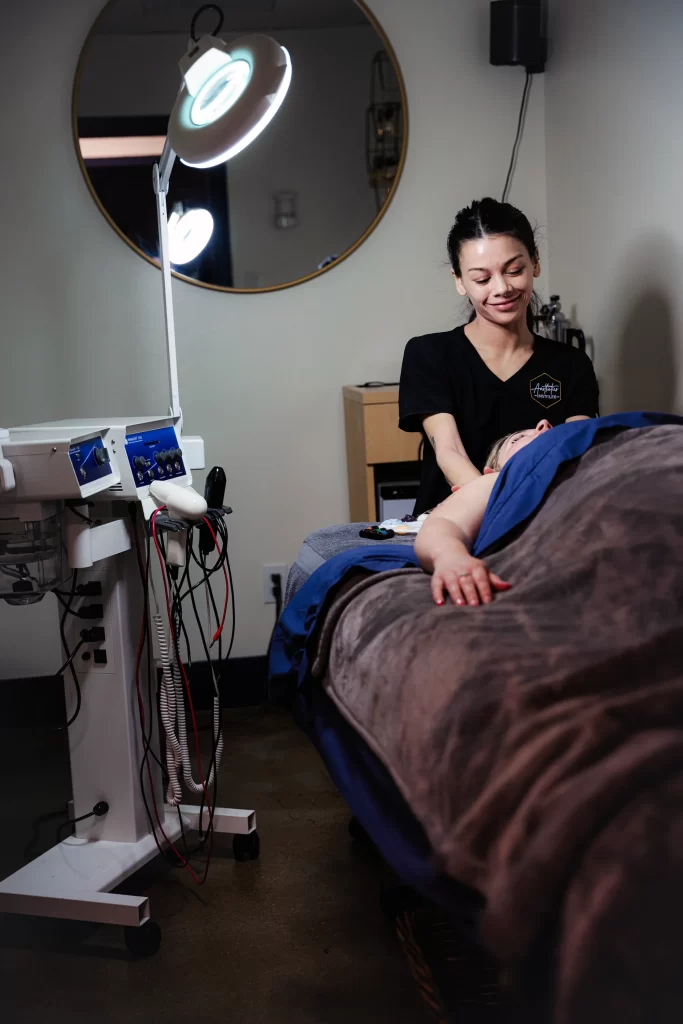
You will start to understand the electricity chapter more by seeing the pieces of the machine in action. You will also learn the basics of extractions which will be taught during the in-house portion of your course.
This module will also break down the expectations for the practical exam for this facial as well as what to expect on all your final practical exams during the program.
Hair Removal with Soft & Hard Wax
This module will cover both hard and soft wax techniques for waxing areas of the face and body.
You will learn how to set up for the treatments, how to perform the treatments, and how to maintain sanitation.
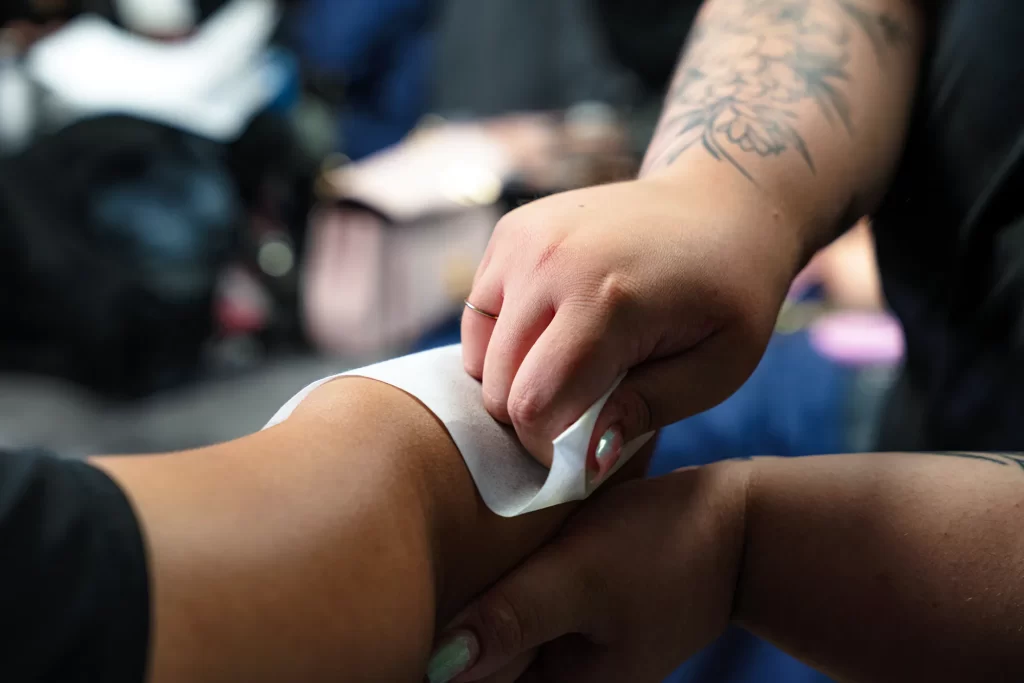
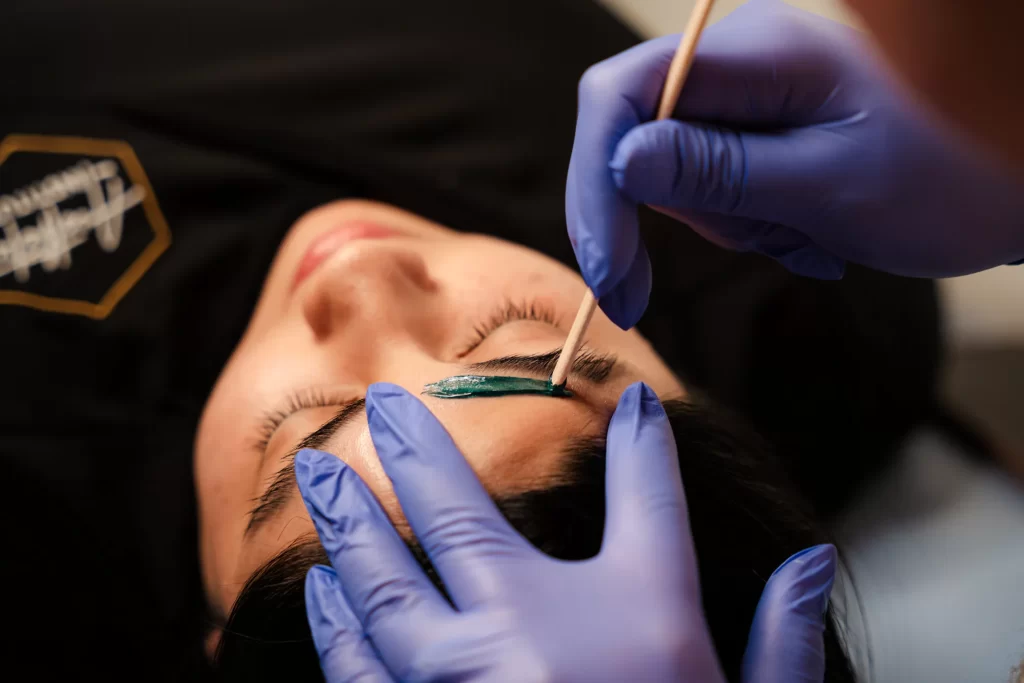
Student Success Tip:
" Hard wax is more gentle on the skin, has a lower melting point so it can be more tolerable, and it can be used anywhere on the face and body. Hard wax is often made of rosin and wax and is applied with a clean applicator and removed by hand once it cools.
Soft wax is often a resin-based wax that is applied with a clean applicator and removed with non-woven fiber strips or cotton strips. Soft wax is best used for large areas like legs or back.”
Student Success Tip:
" Hard wax is more gentle on the skin, has a lower melting point so it can be more tolerable, and it can be used anywhere on the face and body. Hard wax is often made of rosin and wax and is applied with a clean applicator and removed by hand once it cools.
Soft wax is often a resin-based wax that is applied with a clean applicator and removed with non-woven fiber strips or cotton strips. Soft wax is best used for large areas like legs or back.”
Microdermabrasion with DiamondGlow
This module will cover the basics of microdermabrasion and its different forms and modalities.
You will learn the indications, contraindications, and how to properly select clients who will benefit the most from this treatment.

You will learn about dry microdermabrasion as well as wet microdermabrasion and the benefits and challenges of each modality.
You will learn techniques used to best treat common skin concerns such as fine lines and wrinkles, pigmentation, and scarring, as well as how to recommend multiple treatments to clients.
This module will also cover DiamondGlow (formerly SilkPeel). This fan-favorite device is one you will learn in-house, so it’s important for you to learn how and why it works.
Dermaplaning Techniques
This module will cover dermaplaning techniques and how to perform this treatment on the face, neck, and decollete.
Dermaplaning is one of the most popular treatments right now and a great treatment to layer with others.

You will learn the indications, contraindications, and best layering techniques of this treatment.
You will learn how to properly and safely apply the sterile 10-blade to the blade handle and how to hold the skin tight for a safe treatment.
Social Media & Marketing, and Spa & Salon Business Planning
This module will cover entering the workforce once you are done with school.
You will learn about the different resources available to you as a student and graduate of the Aesthetics Institute.
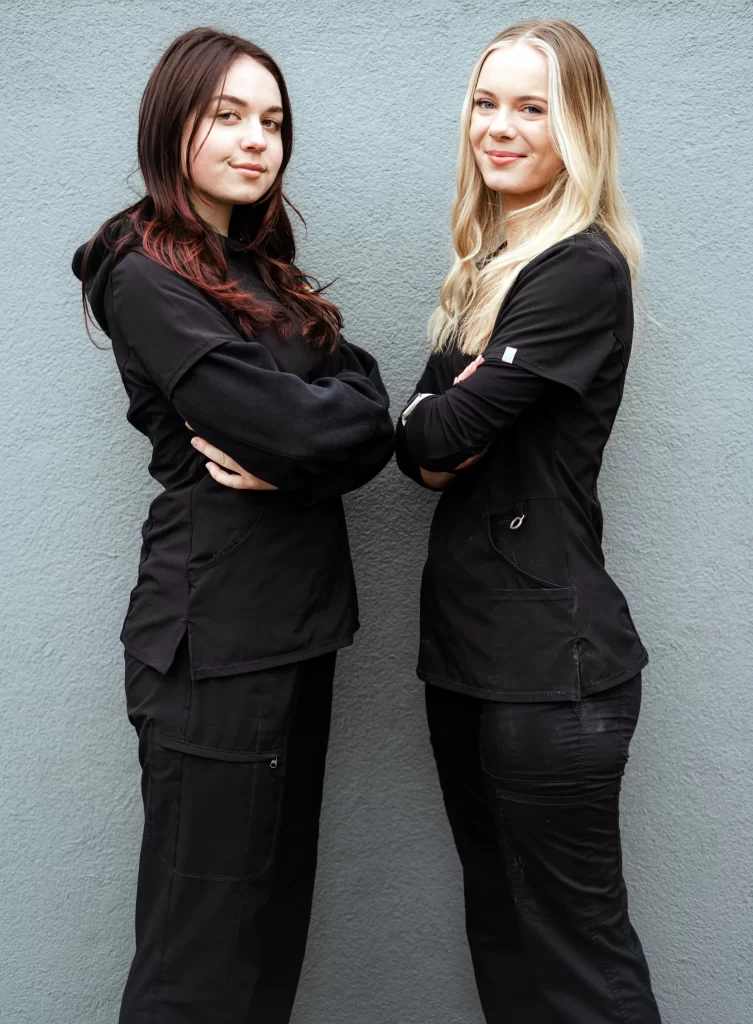

This module details how to report tips to the IRS and create a professional resume, and interview best practices in this industry.
You will learn about the different career pathways available to you so whether you want to work for yourself or someone else, you have an idea of what that might look like and your options.
Student Success Tip:
" Even if you do not plan on working for yourself right away, there are so many different job opportunities and ideas within this industry, just know you could possibly work for yourself at some point during your career in esthetics.
The tools taught in this module will be incredibly useful if you choose to have your own business. Set aside these documents you create so you can easily access them in the future. Also, ask as many questions to the instructors as possible about all things salon and spa business!”
Student Success Tip:
" Even if you do not plan on working for yourself right away, there are so many different job opportunities and ideas within this industry, just know you could possibly work for yourself at some point during your career in esthetics.
The tools taught in this module will be incredibly useful if you choose to have your own business. Set aside these documents you create so you can easily access them in the future. Also, ask as many questions to the instructors as possible about all things salon and spa business!”
